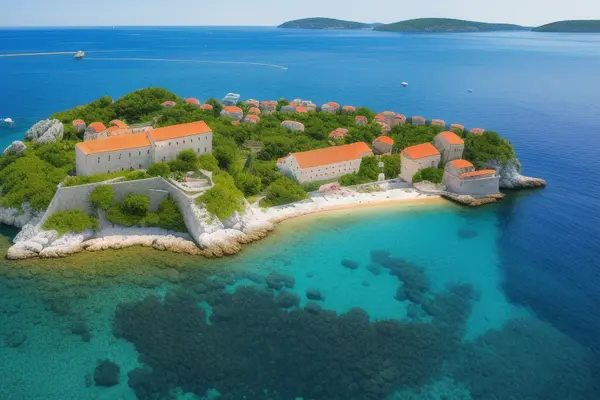Table of Contents:
Introduction to Croatia's Inhabited Islands
Welcome, dear readers! Today we embark on a fascinating journey through the history and culture of Croatia's inhabited islands. These gems in the href="https://community.vacation-properties.eu/regal-adventures-sailing-croatia-with-the-majestic-kleopatra/">Adriatic Sea are not just breathtakingly beautiful but also rich with stories from ancient times. Whether you're an avid traveller or someone interested in exploring new cultures, this article will provide valuable insights into these enchanting destinations.
The Allure of Croatian Islands
Croatia is home to over 1,000 islands, each one unique and offering its own charm. However, only about 50 of them are inhabited year-round. The allure lies not just in their natural beauty - pristine beaches, crystal clear waters, lush vegetation - but also in their cultural heritage that spans centuries back.
Pros and Cons of Exploring Croatian Inhabited Islands
| Pros | Cons |
|---|---|
| Rich History and Culture | Potentially High Travel Costs |
| Stunning Natural Scenery | Weather dependent |
| Unique Cuisine | Language Barrier |
| [Other pro] | [Other con] |
A Glimpse into History: Ancient Times to Modern Day
The story of croatian inhabited islands begins thousands of years ago when they were first settled by Illyrians and Greeks before becoming part of the Roman Empire. Over time they've been ruled by various powers including Venice, Hungary-Croatia Kingdoms and even Napoleon Bonaparte for a brief period!
In more recent history during World War II many islanders joined Partisans fighting against Axis forces while others emigrated seeking better opportunities abroad leaving behind abandoned villages which today serve as poignant reminders of past struggles.
Diverse Cultures Across Different Islands
No two Croatian islands are alike; each has developed its distinct identity influenced by historical events and geographical location. For instance Korčula Island known for Marco Polo’s alleged birthplace boasts Venetian architecture whereas Vis Island still bears traces from British occupation era such as Fort George built atop hill overlooking town of Vis.
Exploring the Islands: What to Expect
When you visit these islands, expect a blend of history and modernity. You'll find ancient ruins alongside trendy cafes, traditional fishing villages next to luxury resorts. The locals are warm and welcoming, eager to share their stories and traditions with visitors.
The cuisine is another highlight - fresh seafood caught daily from Adriatic Sea paired with locally produced olive oil or wine made using centuries-old techniques will surely tantalize your taste buds!
Croatian Island Life: A Unique Experience
Life on Croatian inhabited islands moves at its own pace; it's slower than mainland but that’s part of charm! Islanders live in harmony with nature following seasonal rhythms for farming, fishing even celebrating festivals which often include music dances passed down through generations.
A Journey Worth Taking
In conclusion exploring croatia inhabited islands offers an unforgettable journey into rich history diverse cultures stunning landscapes delicious food much more. Whether you're seeking adventure relaxation cultural immersion there's something for everyone here making them must-visit destinations on any href="https://community.vacation-properties.eu/perfect-10-days-in-croatia/">Croatia itinerary!
Fazit:
To sum up, visiting the enchanting Croatian inhabited islands provides not just a vacation experience but also a deep dive into the country's vibrant culture and fascinating past. It truly is a journey worth taking – one filled with discoveries about humanity’s shared heritage as well as unique local customs waiting to be explored by curious minds like yours!
Understanding the Croatian Islands: Exploring their History and Culture
How many inhabited islands are there in Croatia?
Croatia has over thousand islands, but only about 50 are inhabited.
What is the largest island in Croatia?
The largest island in Croatia is Cres Island.
What are some popular cultural attractions on Croatian islands?
There is a rich variety of cultural attractions across Croatian islands, including ancient Roman ruins, historic churches and Medieval towns.
What languages are spoken in Croatia?
The official language is Croatian, while English is widely spoken by younger generations and in tourist areas.
What is Croatia known for?
Croatia is known for its stunning coastline, crystal clear waters, beautiful islands, historic cities and delicious cuisine.





